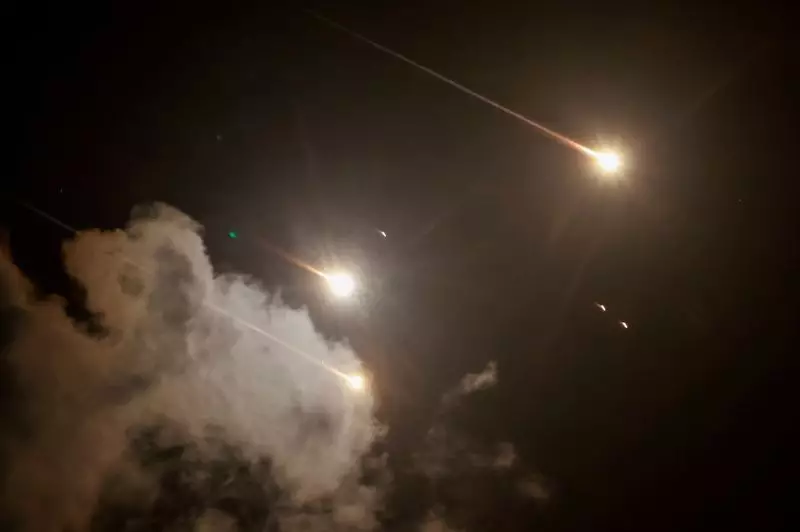The ongoing tensions in the Middle East, particularly characterized by Iran’s increasingly aggressive missile strikes against Israel, epitomize the evolving nature of modern warfare. The barrage of nearly 400 missiles launched by Iran in 2023 has captured the attention of military analysts worldwide, sparking an urgent discourse on missile defense mechanisms and their implications for global security, particularly in the Indo-Pacific region. This article will explore not only the lessons learned from recent Iranian actions but also the broader implications for U.S. and allied defense capabilities amidst the looming shadow of China’s military advances.
The recent missile onslaught by Iran represents a critical testing ground for various missile defense systems. Analysts argue that the effectiveness of U.S. and allied defenses in a potential conflict with China could be drawn from the lessons garnered from Israel’s defensive response to Iranian missiles. Collin Koh, affiliated with the S. Rajaratnam School of International Studies, emphasizes a significant takeaway: as missile technology evolves, reliance solely on deterrence through defensive capabilities might prove insufficient. Instead, establishing a credible retaliatory capability, or deterrence by punishment, could emerge as a vital strategy moving forward.
Such insights compel countries reliant on missile defense systems to reassess their strategies. While the current systems are effective against certain threats, they may falter when faced with more advanced missile technologies that countries like China possess. This realization underscores the imperative for the U.S. and its allies to bolster their offensive capabilities in tandem with existing defenses.
The qualitative differences between Iranian and Chinese missile capabilities spotlight a crucial aspect of modern military strategy. While Iran’s missile technology remains a pressing regional concern, experts like Ankit Panda of the Carnegie Endowment for International Peace argue that the nature of the threat in the Indo-Pacific is different. China’s military arsenal is marked by longer-range and sophisticated weapons systems equipped with maneuverable warheads and precision-guided technology. The geographical expanse of the Indo-Pacific also complicates the dynamics of missile defense significantly when compared to the more condensed battlefield in the Middle East.
The Pentagon’s estimates regarding China’s missile stockpile, including the DF-21 and DF-26 missiles, suggest challenges that far exceed those posed by Iranian missiles. The DF-26, capable of reaching strategic U.S. military installations as far as Guam, combines range with a concerning level of accuracy, rendering existing missile defense systems potentially inadequate in thwarting a large-scale, coordinated offensive.
The potential for coordinated attacks blending missile strikes with cyber operations and anti-satellite warfare adds a layer of complexity to the defense calculus. As noted by Malcolm Davis from the Australian Strategic Policy Institute, traditional missile defense platforms might struggle to neutralize a concerted attack involving various forms of modern warfare. The challenges posed by such multifaceted strategies necessitate a comprehensive approach to defense that integrates advanced technologies and tactics.
Moreover, the evolving landscape of missile warfare necessitates that the U.S. and its allies adapt continuously. The introduction of new systems, such as the AIM-174B air-to-air missile and advanced missile batteries in the Philippines, indicates a proactive move towards countering these threats. However, as the Iranian missile tests have shown, even the most advanced systems have limitations, especially when faced with a barrage of missiles designed to exploit those very defenses.
In light of these developments, the strategic outlook for the Indo-Pacific region necessitates a rethinking of not just defense policies but also military doctrines. The dual reliance on deterrence by denial and punishment must be embraced actively, prioritizing capabilities that can both intercept incoming threats and deliver retaliatory strikes with assured success.
Moreover, developing a clearer understanding of enemy capabilities and intentions will be paramount to maintaining regional stability. What Iran’s missile campaigns against Israel illuminate is not just their tactical execution but the broader implications for international military dynamics. The U.S. and its allies must cultivate a robust defense posture that adapts to the realities of modern warfare, ensuring that they are not caught off-guard in an increasingly volatile global landscape.
Iran’s missile assault on Israel serves as a poignant reminder of the inadequacies and potential of current missile defense systems. The lessons drawn from this situation could become increasingly relevant as tensions escalate in the Indo-Pacific, where the stakes are higher, and the challenges more pronounced. The future of military engagement in this region will be defined by the readiness to adapt, innovate, and respond to an evolving threat landscape.

